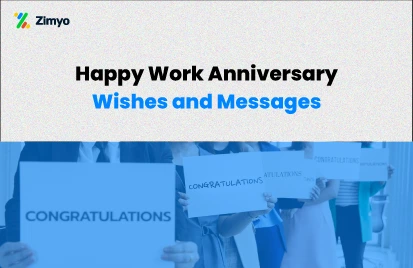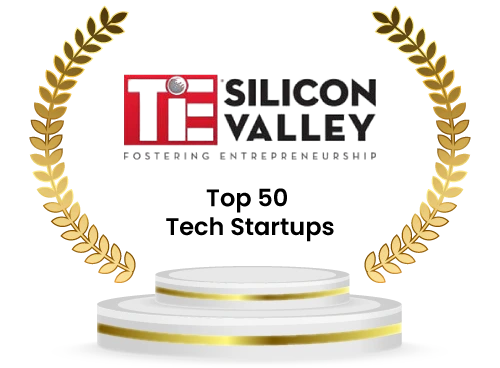Why Should You Care About Workplace Etiquette?
Have you ever wondered what makes a workplace truly professional and harmonious? It all boils down to workplace etiquette. This set of professional behaviors ensures a productive and respectful environment. Whether you’re a seasoned professional or just starting your career, understanding and practicing etiquette at work is vital. Let’s dive into why it matters and how you can master it.
Workplace Etiquette Meaning
Workplace etiquette means following the unspoken rules of professional behavior. It ensures smooth collaboration and a respectful atmosphere. Whether you’re in a formal office or a casual workplace, etiquette helps maintain harmony. According to Emily Post, a renowned etiquette expert, “Manners are a sensitive awareness of the feelings of others.” In the workplace, these manners translate into respect, punctuality, and professionalism.
Here’s why it’s important:
- 78% of employees say a respectful workplace improves their productivity.
- Poor etiquette can lead to conflicts or even job loss.
Think about this: Have you ever felt annoyed by a coworker’s loud phone calls? Or struggled with a messy shared desk? These small things can create big problems.









Why Does Workplace Etiquette Matter?
Think about this: First impressions are formed in just 7 seconds. By practicing good office etiquette, you show respect, build trust, and increase collaboration. Studies reveal that 75% of employers believe good manners directly influence career success.
How to Follow Workplace Etiquette
Mastering workplace manners doesn’t happen overnight. Here are ten key aspects to get you started:
1. Keep Communication Professional
Clear and respectful communication is the backbone of etiquette at work. Here’s how:
- Use polite language in all interactions.
- Avoid slang unless the company culture encourages it.
- Respond to emails and messages within 24 hours.
Example: Always greet your colleagues with a friendly “Good morning.” It sets a positive tone for the day.
2. Show Respect for Others
Your coworkers’ time, space, and opinions deserve consideration.
- Listen actively during meetings.
- Avoid interrupting conversations.
- Respect differing viewpoints.
Tip: Use phrases like “I understand your perspective” to show empathy.
3. Be Punctual
Time management is a cornerstone of office etiquette.
- Arrive at work and meetings on time.
- Inform relevant people promptly if you’re running late.
Fact: Being late to meetings can cost companies up to $1,000 per employee annually in lost productivity.
I was able to implement the platform on my own. It helps in assigning the tasks to other employees, conducting surveys and polls, and much more. The ease of use and self-onboarding is something that I would like to appreciate.
Sonali, Kommunicate
Zimyo simplifies attendance management for our organization. The leave and attendance are so streamlined that we have never faced any difficulties with the system.
Anurag, Eggoz Nutrition
4. Follow the Dress Code
Your attire speaks volumes. Follow these guidelines:
- Align your wardrobe with company policies.
- Ensure your clothes are clean and appropriate.
Example: In a business casual setting, opt for slacks and a button-down shirt.
5. Maintain Your Workspace
A clutter-free workspace promotes productivity.
- Keep your desk tidy.
- Respect shared spaces.
Tip: Dedicate 5 minutes daily to organizing your desk.
6. Confidentiality is Key
Trust is the foundation of a professional environment.
- Safeguard sensitive company information.
- Avoid gossip about colleagues.
Reminder: Loose talk can damage reputations and relationships.
7. Mindful Technology Usage
Technology is a double-edged sword. Use it wisely.
- Limit personal device usage during work hours.
- Avoid checking phones during meetings.
Statistics: 47% of professionals find excessive phone use disruptive.
8. Collaboration and Team Spirit
Success thrives on teamwork.
- Help colleagues when needed.
- Acknowledge their contributions.
Example: Celebrate a team milestone with a simple “Great job, everyone!”
9. Handling Conflict
Conflicts are inevitable, but how you handle them matters.
- Address issues calmly and professionally.
- Seek mediation if necessary.
Quote: “Conflict is inevitable, but combat is optional.” – Max Lucado
10. Gratitude and Politeness
Never underestimate the power of politeness.
- Say “please” and “thank you” often.
- Show appreciation for assistance.
Example: A simple “Thanks for your help” can boost morale.









Research Note
A study by the Society for Human Resource Management (SHRM) found that 93% of employees believe respect and courtesy are critical for job satisfaction. Clearly, workplace etiquette is not just a formality; it’s a necessity.
Cubicle Etiquette: Sharing Space With Respect
If you work in a cubicle, you know how close you are to others. Cubicle etiquette helps maintain privacy and peace.
- Keep noise low: Use headphones for calls or music. Avoid loud conversations.
- Respect boundaries: Don’t peek into others’ cubicles. Always knock if they have walls.
- Stay clean: Avoid clutter. Keep your workspace neat.
Example: Imagine your coworker eats smelly food at their desk every day. It’s distracting, right? Respecting shared spaces keeps everyone comfortable.
Office Restroom Etiquette: Keeping It Clean
Office restroom etiquette may seem basic, but it’s often overlooked.
- Flush after use: Always ensure the toilet is clean for the next person.
- Dispose of waste properly: Use bins for tissues or paper towels.
- Wash your hands: Hygiene is crucial in shared spaces.
A survey revealed that 60% of employees feel uncomfortable using restrooms due to poor etiquette. Let’s change that.
International Business Etiquette
As the global market grows, the need to understand multiple international standards of business etiquette grows. Research the country you will be working in or visiting; note the proper etiquette, culture, and customs for that country.
- Knowing the language: Makes an excellent impression. Feigning fluency can harm relationships.
- Time zones: Be mindful of them. Avoid calling at awkward hours.
- Work hours: Remember, work schedules differ worldwide.
- Holidays: Respect local holidays and understand people’s availability.
- Meals: Dining customs matter. Research etiquette to avoid costly mistakes.
Example: Knowing how to greet a Japanese business associate with a bow instead of a handshake shows respect for their culture. Paying attention to such details builds trust.
Etiquettes in Meetings: The Pure Professional Interactions
Meetings are an integral part of professional life, but they can be intimidating, especially when you’re new. Following proper meeting etiquette helps you make a positive impression and build credibility.
- Timing: Arrive 5 minutes early to show respect for others’ time. Never be late; inform someone in advance if unavoidable.
- Preparation: Review the agenda and materials beforehand. Be ready to contribute meaningfully.
- Interruptions: Avoid cutting people off. Wait for your turn to speak and listen actively.
- Confrontation: Address disagreements privately. Meetings are not the place for arguments.
- Exiting: If a meeting overruns, excuse yourself politely by explaining your next commitment.
Example: Imagine a team meeting running late while you have another scheduled call. Instead of walking out abruptly, you say, “This has been productive. I need to step out for another meeting but will follow up on what I missed.” This approach keeps things professional and respectful.
Dressing: A Major Workplace Etiquette
Dressing appropriately in the workplace reflects professionalism and respect for the company culture. Adhering to the dress code is a key aspect of workplace etiquette.
- Follow company policy: Always align your clothing with the organization’s dress code. Formal workplaces may require suits and ties, while others might allow business casual attire.
- Business casual: This typically includes slacks, khakis, collared shirts, dresses, skirts of appropriate length, and closed-toe shoes.
- Neat and maintained: Ensure your clothes are clean, pressed, and free of wrinkles. This presents a polished and professional image.
- Avoid distractions: Stay away from revealing or flashy outfits. Subtle and professional clothing keeps the focus on your work.
Example: Imagine attending a client meeting in overly casual attire while others are in suits. This mismatch can create a negative impression, making it harder to establish credibility. Dressing appropriately not only boosts your confidence but also demonstrates respect for the workplace and its culture.
I was able to implement the platform on my own. It helps in assigning the tasks to other employees, conducting surveys and polls, and much more. The ease of use and self-onboarding is something that I would like to appreciate.
Sonali, Kommunicate
Zimyo simplifies attendance management for our organization. The leave and attendance are so streamlined that we have never faced any difficulties with the system.
Anurag, Eggoz Nutrition
The Do’s and Don’ts of Workplace Etiquette
Here’s a quick checklist to guide your actions:
Do’s | Don’ts |
Greet everyone politely. | Interrupt others during meetings. |
Keep shared spaces tidy. | Gossip about colleagues. |
Respect others’ time. | Arrive late for meetings. |
Dress appropriately. | Wear overly casual clothes. |
Follow office technology policies. | Overuse personal devices. |
Show gratitude. | Use offensive language. |
How Etiquette at Work Leads to Success?
Good manners at the workplace aren’t just nice—they’re powerful. They help you:
- Build trust with your team.
- Avoid misunderstandings.
- Show professionalism, which can lead to promotions.
In fact, 85% of employees believe etiquette plays a role in career growth.
10 Mistakes to Avoid While Following Workplace Etiquette Rules
Avoid these common pitfalls:
- Arriving late consistently.
- Ignoring dress codes.
- Interrupting conversations.
- Overusing personal devices.
- Failing to meet deadlines.
- Gossiping about colleagues.
- Leaving shared spaces untidy.
- Being dismissive of feedback.
- Oversharing personal details.
- Forgetting to thank others.









The Crux of the Blog
Mastering workplace etiquette is your ticket to professional success. By practicing respect, punctuality, and teamwork, you not only uplift yourself but also contribute to a positive workplace culture.
Quote to Remember: “Good manners will open doors that the best education cannot.” – Clarence Thomas
Let’s commit to making our workplaces better for everyone, starting today!
Read More....
The Must-have HR Policies for Your Organization
9 Ways To Make Conference Calls Less Painful & Irritating!
How To Improve Employee Engagement During Return-To-Office Process?
















